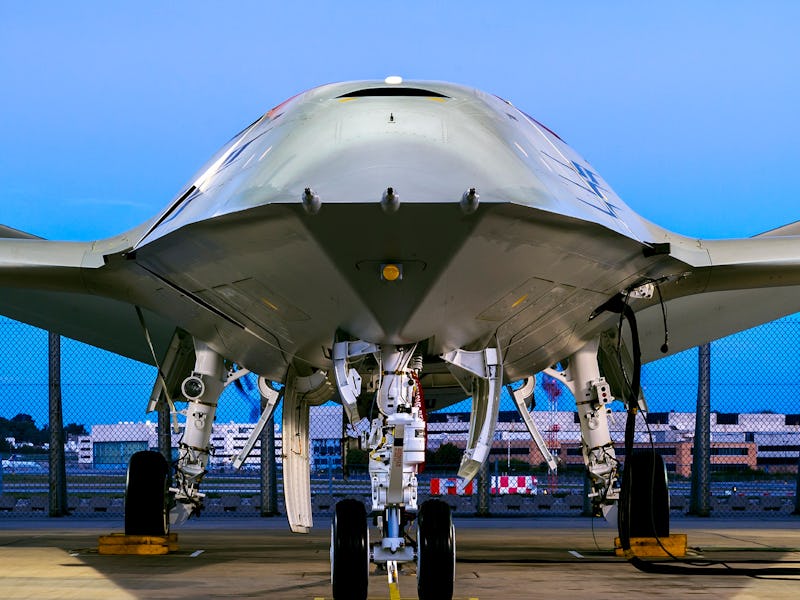Boeing Unveils a Massive Uncrewed Stingray Drone
It will be used in the U.S. Navy

Boeing has taken the wraps off its design for an uncrewed aircraft system for refueling United States Navy jets from aircraft carriers mid-flight, and it looks giant. Unveiled on Tuesday, the company is submitting the drone to the Navy as part of the MQ-25 competition, in which multiple defense contractors are building their own version of the refueling drone.
“Boeing has been delivering carrier aircraft to the Navy for almost 90 years,” Don ‘BD’ Gaddis, a retired admiral who leads the refueling system program for Boeing’s Phantom Works technology organization, said in a statement. “Our expertise gives us confidence in our approach. We will be ready for flight testing when the engineering and manufacturing development contract is awarded.”
Boeing is currently completing engine run tests, with a view to hosting deck handling demonstrations early next year.
First revealed in May, the competition is aimed at extending the range of aircraft like the F/A-18 Super Hornet, EA-18G Growler, and F-35C fighters, which only have a range of around 500 to 600 miles. The uncrewed aircraft system will be used to combat the use of anti-ship missiles that are increasingly capable of destroying aircraft carriers up to 1,000 miles away from the shore. Competition proposals are due on January 3.
“The MQ-25 will provide a robust organic refueling capability to make better use of our combat strike fighters and extend the range of the carrier air wing,” Naval Air Systems Command spokesperson Jamie Cosgrove told Scout Warrior in May.
View Boeing’s entry in all its sheer size below:
Boeing's entry.
After the Navy released its final request for proposals in October, Northrop Grumman announced it would not put forward a bid, with it believed the company was skeptical it could deliver a design that both met specifications and would be profitable for the company.
Lockheed Martin and General Atomics are the other two companies expected to put forward a proposal before the deadline, and all eyes are on to see how the final vehicles may differ from Boeing’s entry.